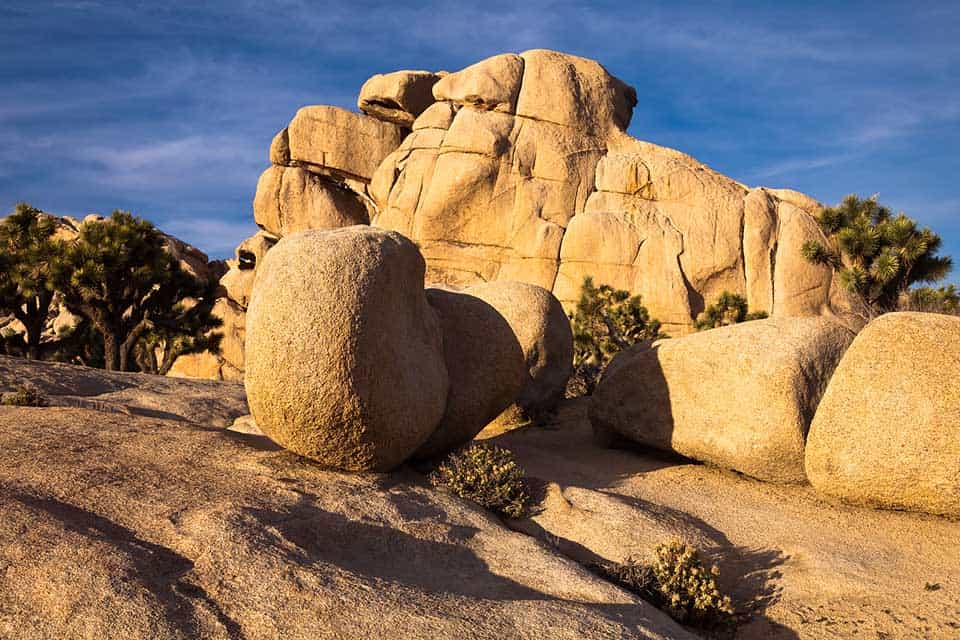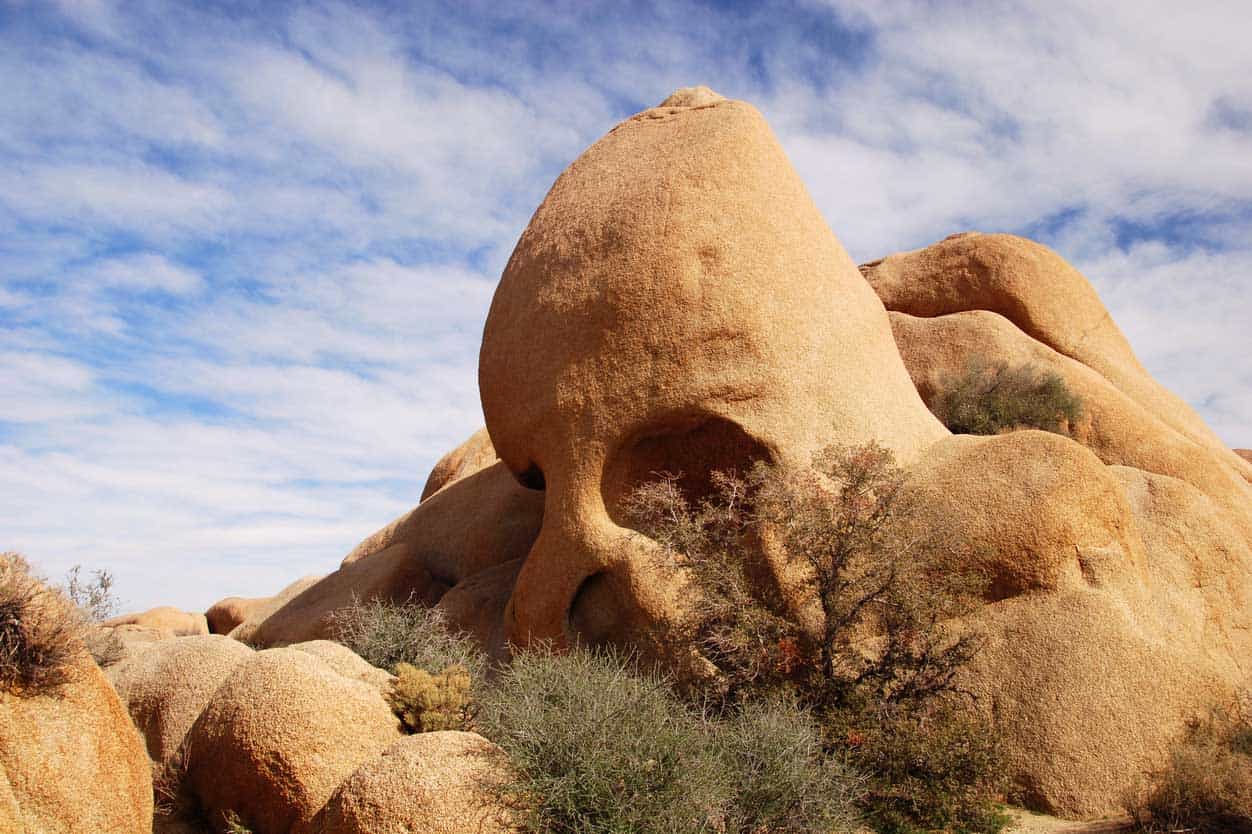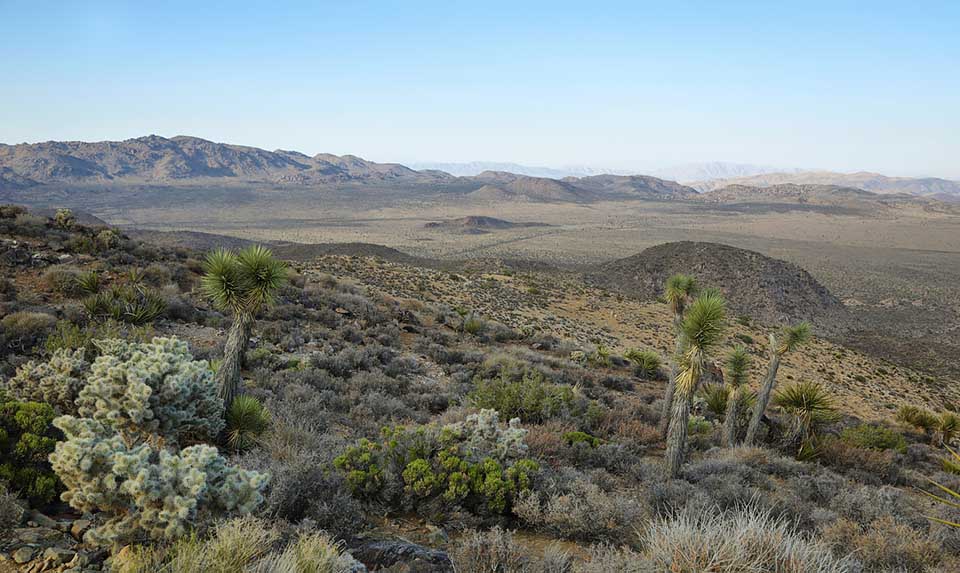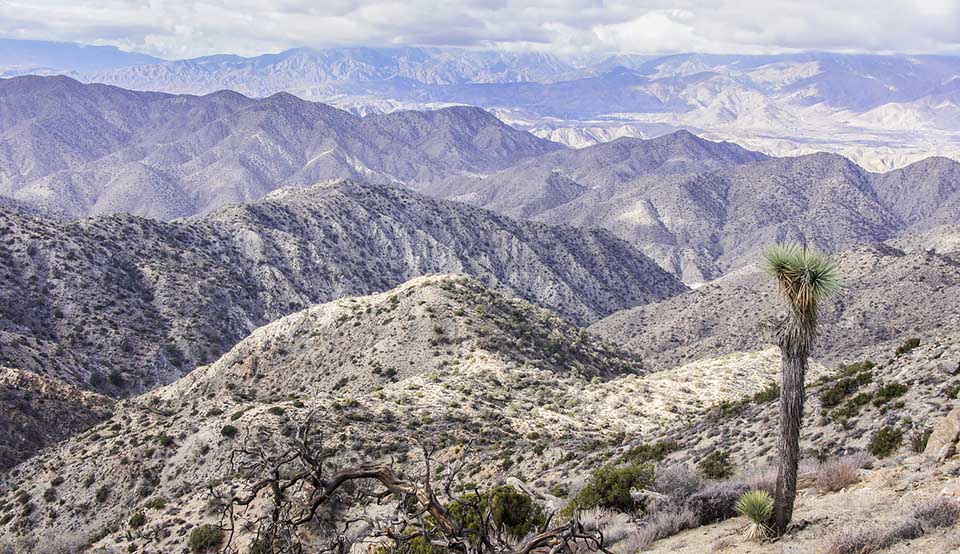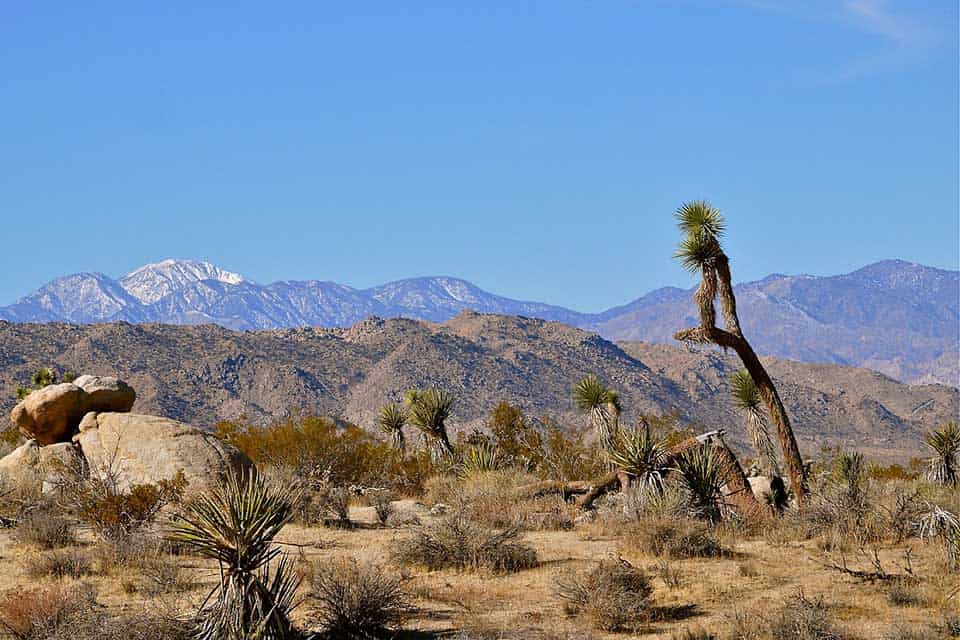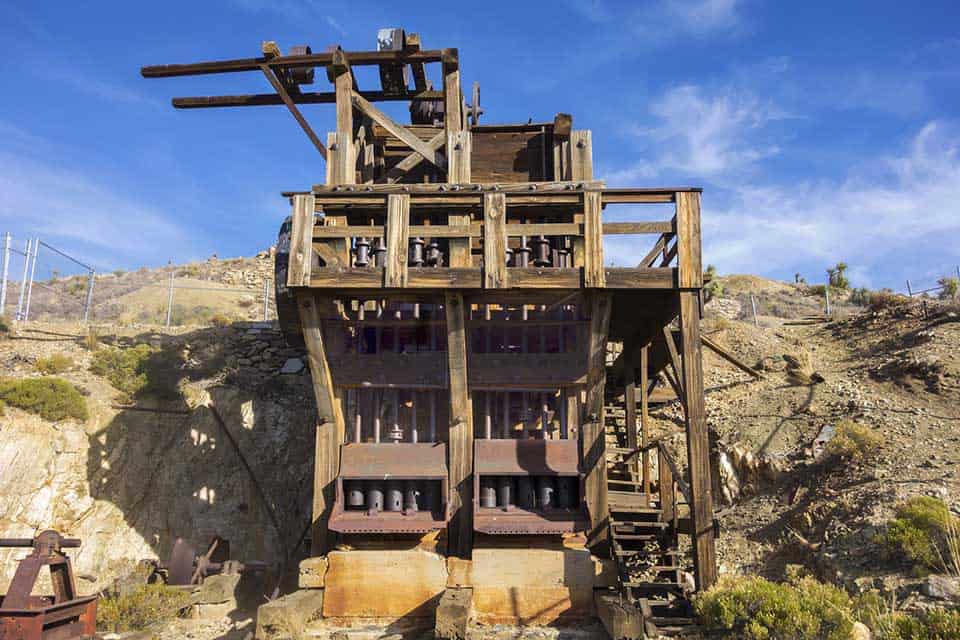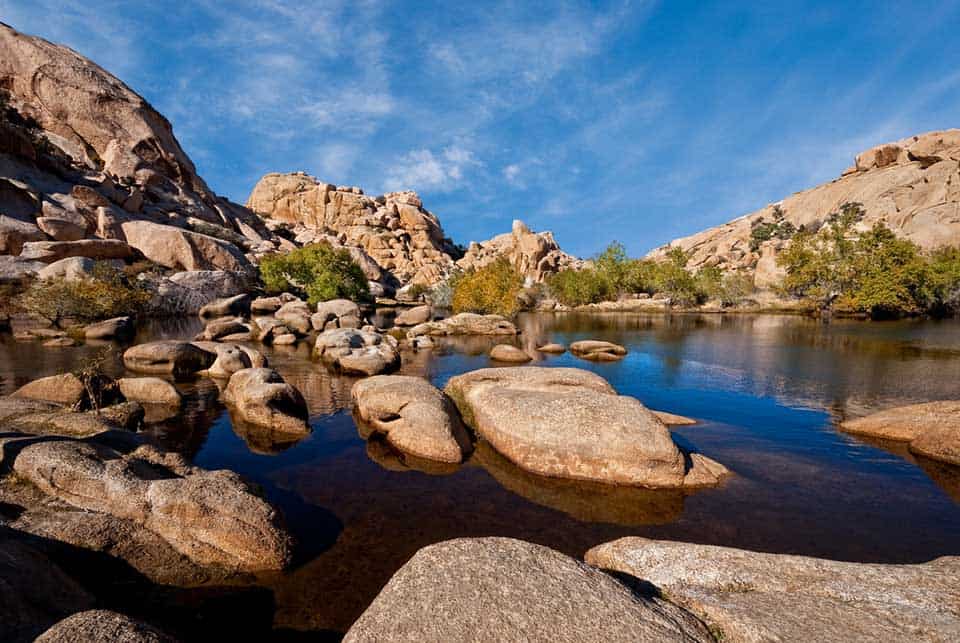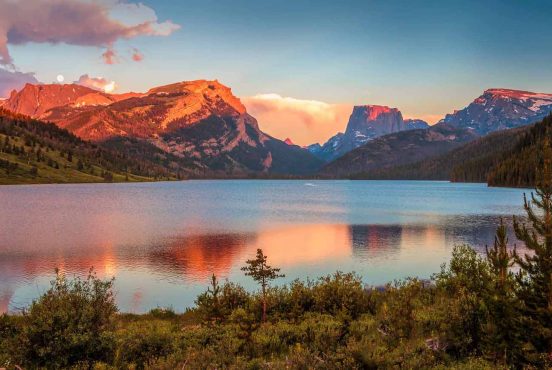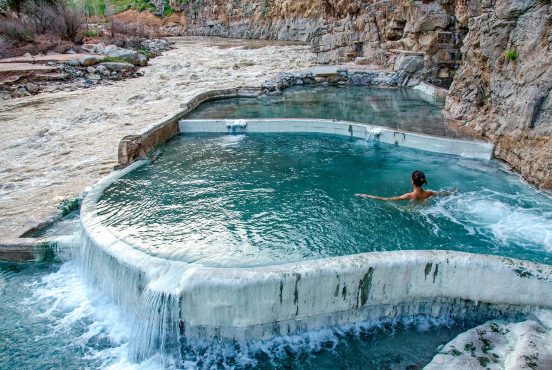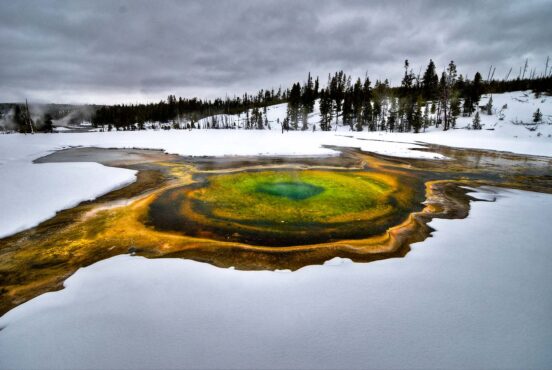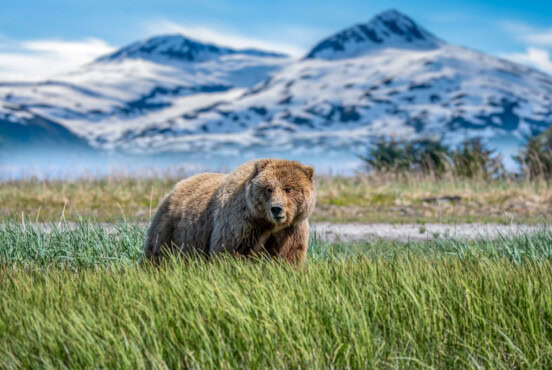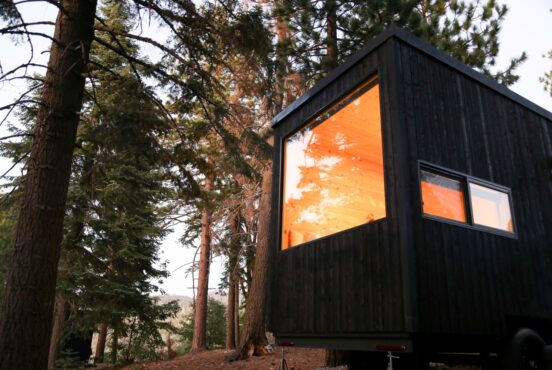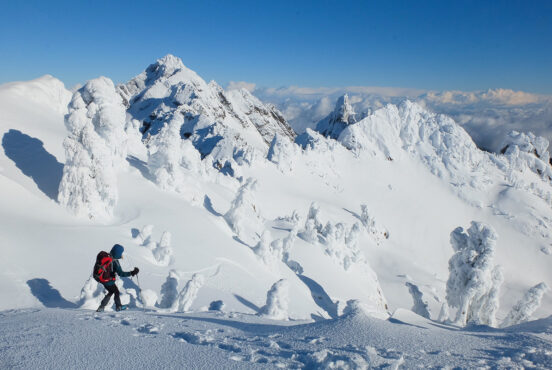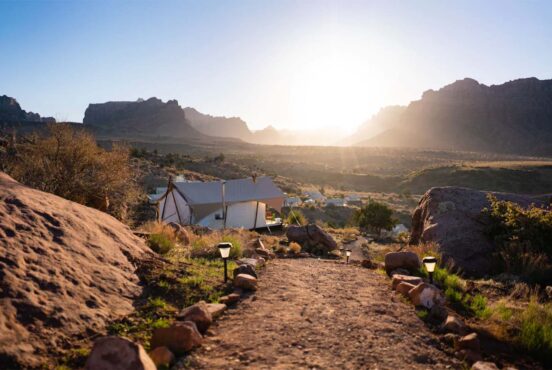What do hikes, giant sloths, Mormons, and the desert all have in common? Joshua Tree National Park.
Joshua Tree National Park is where the Mojave and the Colorado Desert collide. Named after the bizarre, spiky looking tree (more on the Joshua tree here), Joshua Tree National Park is home to a unique and diverse ecosystem that is best explored on foot.
From panoramic viewing peaks to jumbled mazes of scramble worthy rocks, Joshua Tree National Park offers an array of trails that are truly one of a kind.
You can saunter through a maze of cholla cacti or get a good sweat in as you ascend to a promising summit. Whatever your hiking flavor of choice is, you won’t be disappointed. That is, as long as you can stand the heat.
If you’re ready to get lost in the desert, figuratively of course, explore our list of the best hikes in Joshua Tree National Park.
Related Read: 10 Best Glamping Spots Near Joshua Tree National Park, California
1. Hidden Valley Nature Trail
Why you should go: An interpretive trail that winds through clusters of massive rock formations.
- Difficulty: Easy
- Distance: 1 mile
- Elevation gain: 114 feet
The Hidden Valley Nature Trail is a mere glimpse into the wonders of Joshua Tree. Travel the short 1 mile loop and you’ll experience some of the park’s more notable features.
Jumbled rockpiles of monzogranite protrude from the dry desert valley floor as the trail travels through. Follow the interpretive signs to learn more about the array of plants dotting the unique ecosystem surrounding you.
Whether you’re looking for a leg stretcher or it’s just too damn hot to do a longer hike, the Hidden Valley Nature Trail should be on your hiking list.
Related Read: 6 Phenomenal Backpacking Trails in Joshua Tree National Park
2. Skull Rock Nature Loop
Why you should go: Snap a photo of a natural rock formation that resembles a skull then explore other cool desert features.
- Difficulty: Easy
- Distance: 1.8 mile
- Elevation gain: 120 feet
Adjacent to Jumbo Rocks Campground is the popular Skull Rock Nature Loop.
Named after, you guessed it, a natural rock formation that looks like a Skull, the Skull Rock Nature Loop draws in quite the crowd. The crowds, however, tend to stop right at the main attraction.
If you’re willing to surpass the hoards merely looking for a quick photo op, you’ll be pleasantly surprised by this scenic hike. Boulders, washes, and open views of the desert landscape await your exploration.
Related Read: 10 Gorgeous Joshua Tree Airbnb Rentals with Pools
3. Ryan Mountain
Why you should go: A popular ascent that leads to a ridiculously rewarding view.
- Difficulty: Moderate
- Distance: 3 miles
- Elevation gain: 10,069
If you’re looking to expel a bit of effort for a worthy view, slap on your trekking boots and hike up Ryan Mountain.
Gaining about 1,050 feet elevation, Ryan Mountain puts you to work. The work, however, doesn’t last long before rewarding you with an expansive panorama view.
Be on the lookout for bighorn sheep grazing trailside. And don’t forget to bring a hat along with plenty of water! This popular out and back trail meanders through full sun with zero shade around.
Related Read: 9 Soak-Worthy Hot Springs in California
4. Warren Peak
Why you should go: Expansive views of nearby peaks in a quieter section of the park.
- Difficulty: Moderate
- Distance: 5.8 miles
- Elevation gain: 1,116 feet
If you’re looking for a quieter climb than Ryan Mountain, head on over to the west side of the park and tackle Warren Peak. This is an out and back trail that’s a good balance between work and reward.
The trail starts off nice and wide, then narrows as you make your ascent. Winding through the canyon the trail will turn to a steep climb, meaning you’re almost to the summit.
On a clear day you can see Big Bear and Palm Springs off in the distance. Take time to appreciate the vast view before making your descent.
Related Read: An Epic Guide to California’s 14ers: Hiking & Climbing the High Peaks
5. Fortynine Palms Oasis Trail
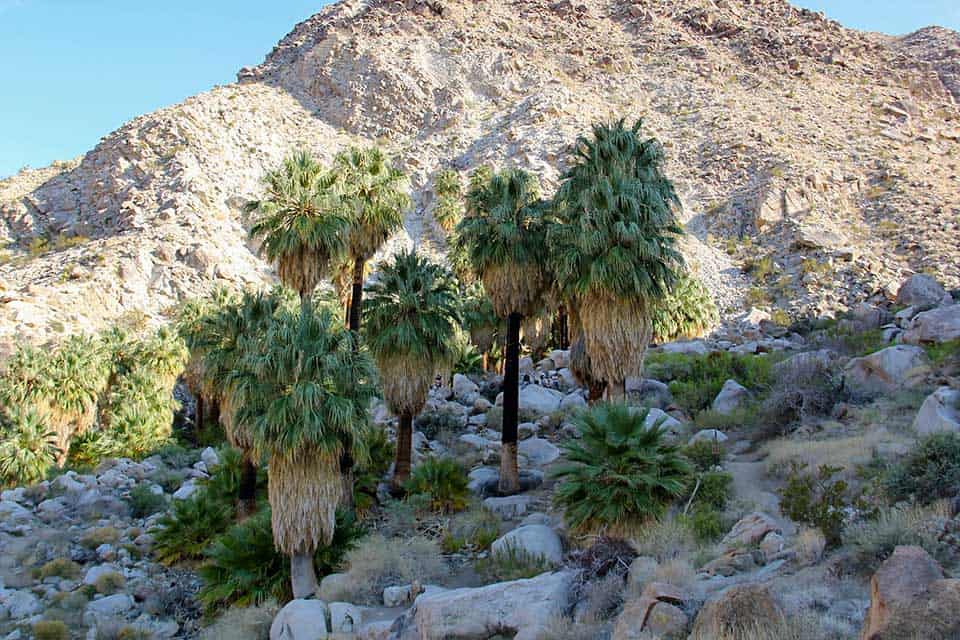
Why you should go: A canopy of palms surrounding a small pool of water in the middle of the dry, hot desert.
- Difficulty: Moderate/strenuous
- Distance: 3 miles
- Elevation Gain: 300 feet
Located off Highway 62, Fortynine Palms Oasis Trail is an out-and-back hike that can be rather strenuous at times. You’ll climb about 300 feet to the top of a rocky ridge before descending upon a small refreshing oasis.
While this elevation gain may not sound tough, Fortynine Palms Oasis offers zero shade along the way. Once you reach the palms, however, you’ll find reprieve from the hot desert sun.
Relax under the palms amidst the boulders and gaze out upon the landscape. Barrel cacti surround this area while lizards can be found basking in the sun.
Due to soaring temperatures, we don’t recommend doing this hike in the summer.
Related Read: 11 Epic Winter Camping Spots in California
6. The Maze Loop
Why you should go: A fairly flat stroll through a wild landscape.
- Difficulty: Moderate
- Distance: 4.7 miles
- Elevation gain: 360 feet
While there are several ways you can tackle The Maze, we recommend the 4.7 mile loop.
This loop winds through a broad desert landscape filled with varying shrubs, Joshua trees, washes, and rock formations. As the name suggests, The Maze Loop has plenty of twists and turns where you can get lost so bring a map.
Take note, the park has upped the signage making it easier to stay on trail, but the terrain on this hike kind of all looks the same. So needless to say, you can still get turned around pretty easily.
Related Read: The Best Time to Visit Death Valley National Park, California
7. Arch Rock Trail

Why you should go: Cool looking natural arch with ample opportunities for scrambling and photography.
- Difficulty: Easy
- Distance: 1.3 miles
- Elevation gain: 88 feet
If you’re short on time, or it’s just too damn hot out, hit up Arch Rock Trail. Located at the White Tank Campground, Arch Rock Trail is short on distance but not on splendor.
The hike leads you out to a cool looking natural arch that’s surrounded by other rock formations. Slap on your climbing shoes and enjoy an afternoon of scrambling nearby.
Or you could experiment with some night time photography and explore this trail when the stars are shining bright.
Either way, it’s best to park at the Twin Tanks Backcountry Board/Arch Rock Nature Trail parking lot. White Tank Campground has parking for campers only.
Related Read: 10 Vintage Airbnb Rentals Near Joshua Tree, California
8. Lost Horse Mine Loop
Why you should go: Hike to a once profitable mine while experiencing Joshua trees stunning landscape.
- Difficulty: Moderate
- Distance: 6.7 miles
- Elevation gain: 846 feet
History buffs and hikers alike can appreciate the Lost Horse Mine Trail. This trail offers a spectacular backdrop with a fascinating tale.
Producing about $5 million worth of gold back in its heyday, the Lost Horse Mine is no doubt the main highlight of this hike. Along the way, you’ll find plenty of peculiar looking Joshua trees and desert flora mixed in.
While the mine may feel secluded this hike is popular, so arrive early. And please, respect the mine and keep safe by not walking on any of the ruins.
If you’re in for a good western tale, you can read about the Lost Horse Mine here.
Related Read: 9 Amazing Glamping Spots Near Los Angeles, California
9. Cholla Cactus Garden
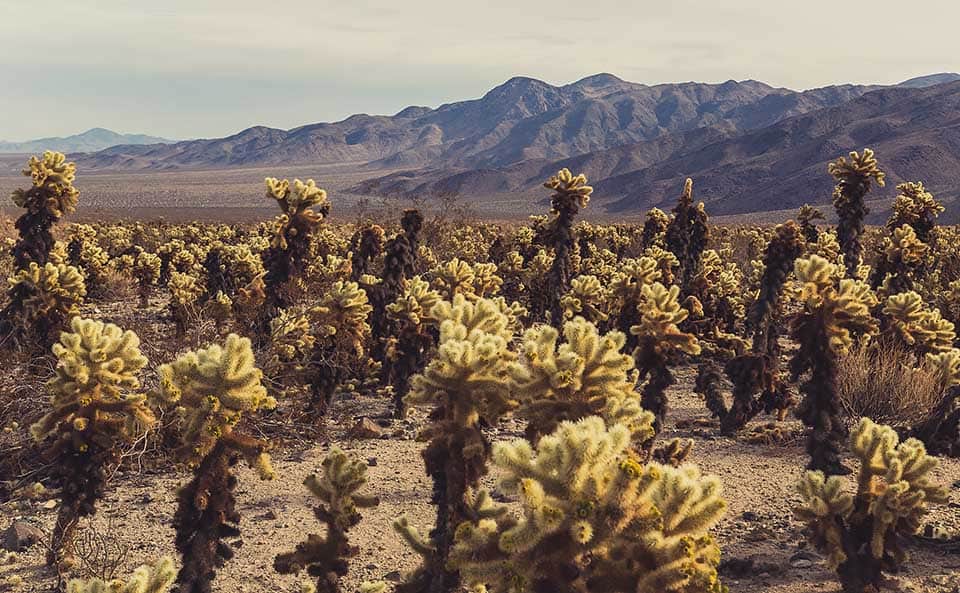
Why you should go: Cool looking cholla garden where the upper Mojave and the lower Colorado Desert meet.
- Difficulty: Easy
- Distance: 0.25 mile
- Elevation gain: 10 feet
The Cholla Cactus Garden is a wonderful little path to stroll with the family. Located near the south park entrance, the Cholla Cactus Garden winds through a flat loop dominated by the fuzzy looking teddybear cholla (Cylindropuntia bigelovii).
But jumping cholla, watch out! These suckers are sharp and not at all soft and woolly as a name may suggest. Don’t get to close or you’ll be regretting your trip to the garden.
On a side note, this garden is situated in an entirely different type of landscape than the rest of the park and one worth investigating.
Related Read: 10 Stunning Hikes in Death Valley National Park
10. Barker Dam Trail
Why you should go: Hike to a historical point of interest with the opportunity to see bighorn sheep.
- Difficulty: Easy
- Distance: 1.1 miles
- Elevation gain: 50 feet
Take a self-guided tour back in time to Barker Dam. The old dam was constructed in 1900 by cattle ranchers looking to have a water reserve for their herd.
On the way to the dam, you’ll wander through riparian corridors and pockets of boulders. All while being surrounded by the prominent Joshua tree.
If you hike the easy 1 mile loop later in the day, you may spot some bighorn sheep along with other desert critters taking advantage of the water source. Be sure to be on the lookout for petroglyphs as you make your way back to the trailhead.
Related Read: 20 Incredible Hikes in Southern California
Know Before You Go
Hiking in Joshua Tree National Park is truly a one of a kind experience. However, before you go please head a word of caution for your own safety.
The desert is expansive and temperatures here can be unforgiving. Hike during the cooler hours and during cooler months. The best time to hike Joshua Tree National Park is fall, winter, and spring.
And, rescues and lost persons are not uncommon. This is why it’s always good practice to inform a friend, family member, or responsible party about your plans.
Along with that, here is a minimal checklist of items you should have with you (no matter how short or long your hike):
- Water
- Hat
- Sunscreen
- Map
- Compass
- Shoes with thick soles
- Headlamp
- Extra layers
- First aid kit
- Food
- Phone
Conditions can be harsh so please bring more than enough water. Also, it’s really easy to get turned around and cell phone service isn’t always available. If you have an emergency personal locator beacon, bring it.
Learn more about the best times to visit Joshua Tree National Park here.
Hike Our National Parks
Get epic travel ideas delivered to your inbox with Weekend Wanderer, our newsletter inspiring more than 10,000 readers every week.
Seen in: California, Hikes, Joshua Tree National Park, National Parks, Southwest


